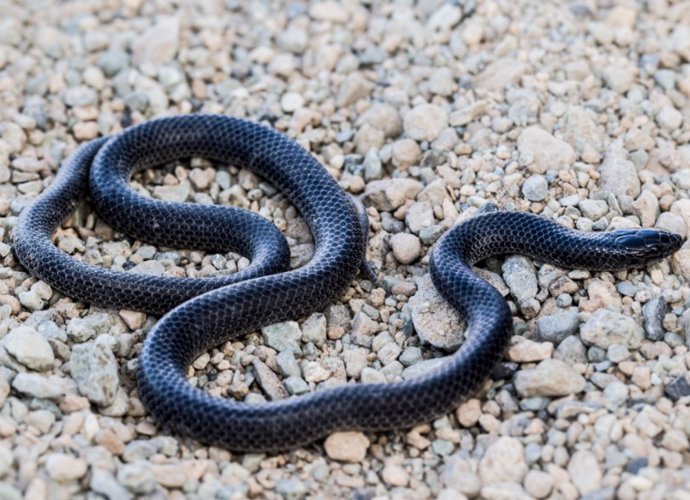Rhynchocalamus hejazicus. – PENSOFT PUBLISHERS
May 31. () –
Scientists have discovered a distinctive and stealthy new species of snake in the Hejaz region of Saudi Arabia. not described until now although it is widely distributed.
Rhynchocalamus hejazicus is a small snake with a black collar and a reddish coloration that distinguishes it from its closest relatives. A uniform black “melanic morphotype” of the species has also been discovered.
The new species is widely distributed and fills much of the distribution gap between the Levant and the coastal regions of Yemen and Oman for the genus Rhynchocalamus.
An international team led by scientists from the Center for Research in Biodiversity and Genetic Resources (CIBIO), Portugal, and Charles University, Czech Republic, published their discovery in Zoosystematics and Evolution.
Rhynchocalamus hejazicus inhabits sandy and stony soils with a variable vegetation cover and can be found in habitats disturbed by humanssuggesting that the species should not be classified as threatened according to IUCN criteria.
Little is known about the natural history and behavior of the species, and more monitoring and conservation efforts are needed to better understand its ecological dynamics and natural history. However, it appears that Rhynchocalamus hejazicus is primarily nocturnal, since all individuals were found active during the night.
“The discovery of a new species of snake widespread in the central-western regions of Saudi Arabia is surprising and gives rise to hope that more undiscovered species may be present in the Kingdom,” say the authors on the Pensoft Publishers blog.
The intensification of field studies in Saudi Arabia in recent years is leading to fruitful collaborations and findings as important as this study, to which many experts from multiple teams have contributed significantly, according to the authors.
The discovery of such a distinctive snake highlights the gap in the description of rare and secretive species, and the need to improve sampling efforts and monitoring strategies. to fully capture species diversity in unexplored areas.










![[Img #74674]](https://thelatestnews.world/wp-content/uploads/2024/12/Santiago-Ramon-y-Cajal-The-promoter-of-modern-neuroscience-150x150.jpg)


![[Img #74674]](https://thelatestnews.world/wp-content/uploads/2024/12/Santiago-Ramon-y-Cajal-The-promoter-of-modern-neuroscience-300x200.jpg)

Add Comment